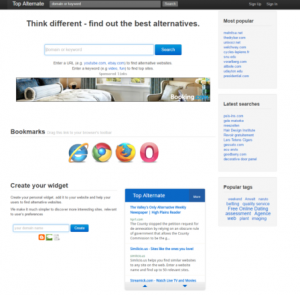Employee engagement has been a top corporate buzzword in the last few decades. Despite its popularity, the definition of employee engagement still eludes most of us.
The definition of employee engagement varies across organizations and company cultures. It is why a drastic difference in branches of the same organization is usually seen.
Let’s discuss the five most essential definitions of employee engagement and what it entails.
5 Essential Definitions Of Employee Engagement
The reason why ’employee engagement’ is hard to define is that ‘engagement’ itself has several implications.
1. “Employee engagement is the harnessing of organization members’ selves to their work roles; in engagement, people employ and express themselves physically, cognitively, and emotionally during role performances.”
Described by William Kahn in 1990, it is perhaps the oldest definition recorded.
Kahn emphasized that companies have been seeing employee engagement in the wrong way. It’s not whether employees “fit” in the organization and more of how employees “felt.”
Additionally, Kahn highlighted the problems in the human resources sector. To improve employee engagement, HRs should ensure to:
- Examine the meaningfulness of the work given.
- Creating a psychologically safe space.
- Allocating resources and motivation to do good work.
- Fostering healthy work relationships where people can bring their entire selves to work.
Because commitments require emotional investment, most employees seek some reciprocation. Employees expect in exchange for their loyalty, and they will earn something of value, primarily in recognition or monetary form.
2. “Employees’ willingness and ability to help their company succeed, largely by providing discretionary effort on a sustainable basis.”
Perrin’s Global Workforce Study of 2003 uses this definition to connect employee engagement with the parent organization and its goals.
If employees feel an emotional connection to their workplace, they are more likely to care about their work more.
An engaged employee uses discretionary effort. Discretionary effort means that an employee will go above and beyond to get the job done.
To see noticeable effort from employees, job satisfaction is necessary. An engaged employee will care about their work and the organizational goals as well.
It is where the difference between engagement and disengagement comes into play. When an employee feels engaged, he will do above and beyond for his job. The same gets reflected in your products and services. It, in turn, will result in customer satisfaction as well.
Magnify your job satisfaction levels through some employee engagement activities and see how your business outcome takes a turn for the good.
3. “Engaged employees as those who are involved in, enthusiastic about, and committed to their work and workplace.”
Gallup defines employee engagement by linking it to positive employees’ emotional connection and employee’s commitment.
The critical driver of employee engagement is having a sense of feeling valued. When employees feel that their opinions matter, they tend to stick around. However, when recognition is at the bottom of the priority list, people think that it doesn’t value their work.
Today’s leaders don’t give out recognition as frequently as they should. Appreciating employees inspires loyalty and builds engagement.
When asked what forms of recognition were the most significant in the Gallup study, respondents indicated these six methods:
- Public recognition via a reward, certificate, or recommendation.
- Getting recognition from a boss, peer, or customer.
- Earning a high level of achievement through performance reviews.
- Promotion or increase job responsibilities to show trust.
- Monetary rewards such as a trip, prize, or pay increase personal satisfaction or pride in work.
4. “A positive attitude held by the employee towards the organization and its value. An engaged employee is aware of the business context and works with colleagues to improve the job’s performance for the benefit of the organization. The organization must work to develop and nurture engagement, which requires a two-way relationship between employer and employee.”
This definition by the Institute of Engagement Studies was given in 2003. IES considers engagement to be more than a passing fade.
Research by IES reflects that engagement improves workplace metrics like:
- Bringing a positive attitude and pride towards the organization.
- Belief in the organization’s products or services.
- A perception that the organization enables the employee to perform to their best.
- A willingness to behave considerately and be a team player.
- An understanding of the bigger picture and a desire to go beyond the requirements of the job.
Like Gallup’s research, IES found that managers focus on influencing the level of engagement.
An employee’s job satisfaction is the most impacted by his manager. Its because Managers have direct and frequent contact with employees daily. That means managers are a medium for communicating the company values, missions, and priorities to employees.
5. “Employee engagement is measured by the ability and willingness of individuals to exert extra effort for the benefit of the company, their tendency to speak highly of the organization, and their intent to stay.”
In February of 2009, Quantum Workplace published five key factors that set companies with high engagement scores apart. Such companies focus on:
- Empowering their employees physically and emotionally.
- Engaging in open and transparent communication.
- Focus on employees’ career growth and development.
- Improve employee satisfaction by recognizing high performing employees.
- Provide employee benefits that exhibit a strong commitment to employee well-being.
It’s a war of talents out there. High performing and good employees value an excellent employee experience.
Today’s businesses should shift their focus to creating a more engaged, diverse, and impactful company culture.
To attract the top talents, companies have to offer more than just the salary. An engaged workforce will do half of the job for you by advocating the company to others.
Wrapping It Up
We must understand the importance of employee engagement in today’s corporate world. Only then can companies withstand the varying changes occurring every few decades and become a legacy.
Business & Finance Articles on Business 2 Community
(57)






